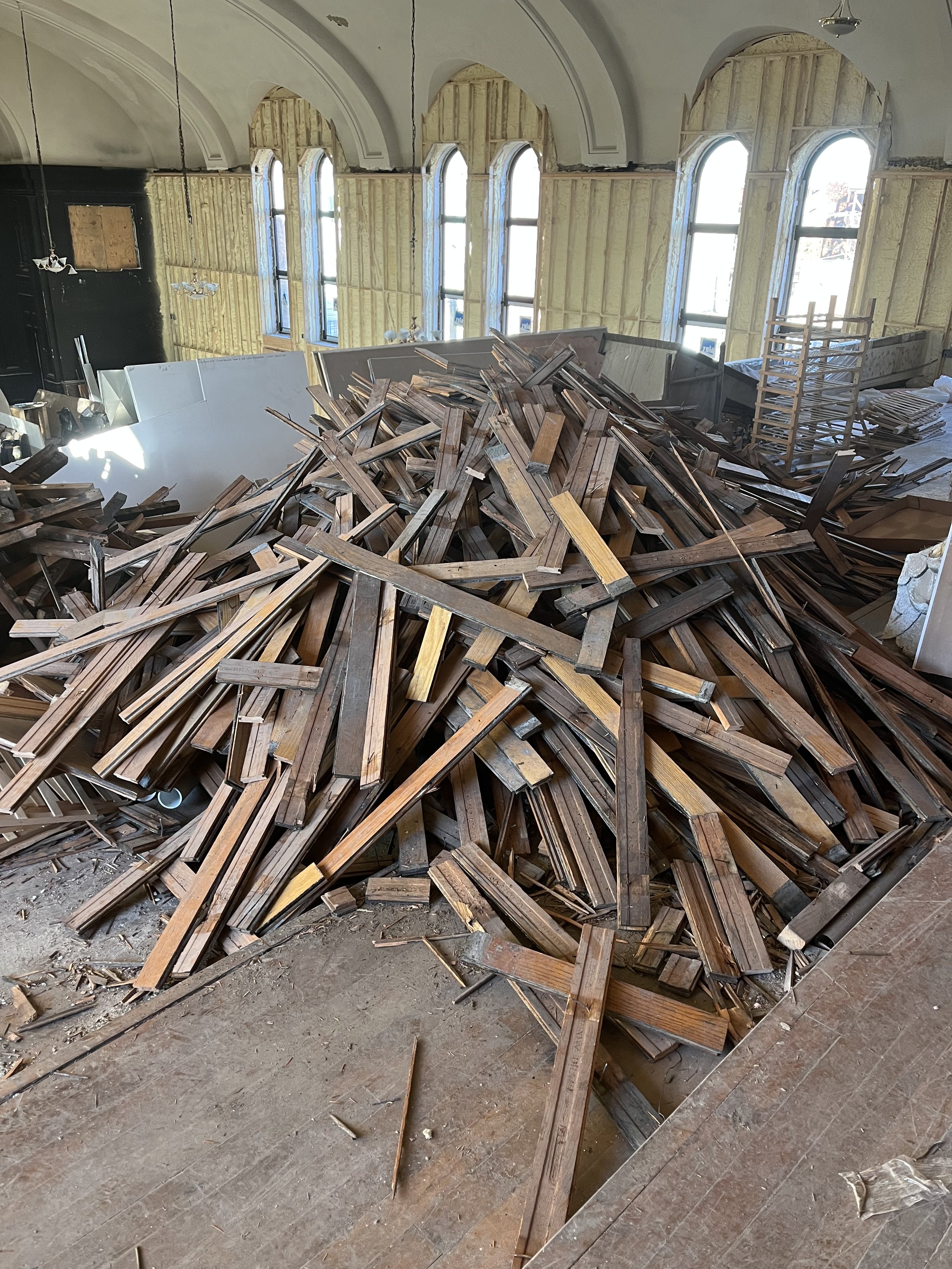If you love old growth forest
By Amber Ginsburg, Executive Director
If you love old growth forests, it makes perfect sense to harvest hardwood flooring from turn of the century buildings. I have been taking apart hardwood floors with a studio assistant, Cooper Page, using a steel pallet buster. Pallets and hardwood floors have a lot in common. Both are comprised of long running hardwood boards nailed into cross pieces called stickers. I genuinely appreciate this big blue bulky tool.
Spending hours prying off each 3” boards, I had a fair amount of time to think about the materials involved. There are the oak floor boards. The pine stickers. And steel nails. As building materials go, all components are separable, which equates to salvageable. With labor. A lot of labor. A lot of, lot of, labor. If one only considers a time based economy, it does not make sense to save old oak flooring.
First, the oak is separated from the stickers. This is a board by board process. Enough time to notice grain, different wear, and curious stains.
Mostly, I was thinking about the trees, the source of this wood. Oak trees are familiar to me, growing up in northern California. Oaks dotted the landscape of my childhood in open lands, along highways, and in front yards. There are many fewer now than when I was growing up. While this is due to many factors, Sudden Oak Death, a disease that targets oaks, has been a caused rapid decrease in the Oak population So the trees and the grain of this 100 year old midwestern forest definitely felt familiar. While the forest species are different in the midwest and much of the topography is flat, Oaks were an integral part of the Midwest landscape, a mix in the forests and a companion to the prairie. I don’t know the stats on Oaks, but I do know that less than 1% of paraire still exists. And for the forest context:
In 1892 alone, 13 billion board feet of timber was cut from the Wisconsin north woods, which according to Mike Dombeck, former Chief of the US Forest Service, was, “enough to build a boardwalk more than 300 feet wide circling the equator.”
Edward Hein’s National Forest Use Book, Sara Black and Raewyn Martyn, Pg, 20
If I had not intervened, this wood was headed for the dumpster and then to landfill. Once moist in landfill, wood decomposes quickly and releases its carbon back into the atmosphere.
As the boards pile up, the volume of one floor section takes hulking shape. This bit of flooring starts to reference a forest. This is not one tree, but many. And this from one section of one house. Imagine all the houses on the block, the neighborhood, the city. If you live in an old home in Chicago, you live with the once vast Midwest forest, cut down, milled and living with us.
Pulling these boards, de-nailing them, and re-staking them to be repurposed as benches over the geothermal ducting, I am working in a carbon economy. An economy that exists in the imagination of many people, including Kim Stanley Robinson. In the world of his book, Ministry of the Future, Cooper and I would be paid for this. The time it takes to do this work may not make sense in our current economy. But it makes carbon sense.
In a nothing-goes-to-waste ethic, the stickers, which are pine, will be buried in the yard as Hugelkultur berms. As the wood breaks down, the nutrients will feed the roots of the young plants growing on top. And, it will provide the yard with some undulating topography.
Not sure what all the steel nails in the pine stickers will do…maybe keep future archeologists guessing about this mound? And in the meantime, old growth forest will support the growth of new trees and plants.





